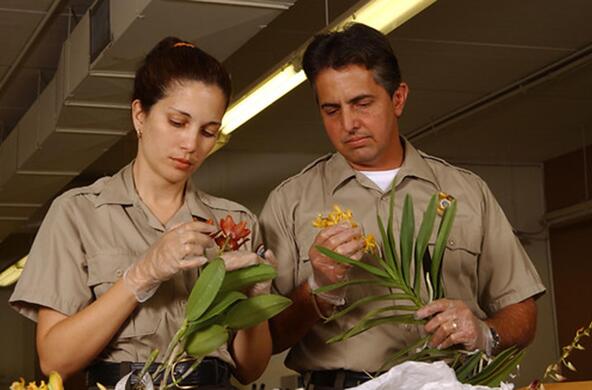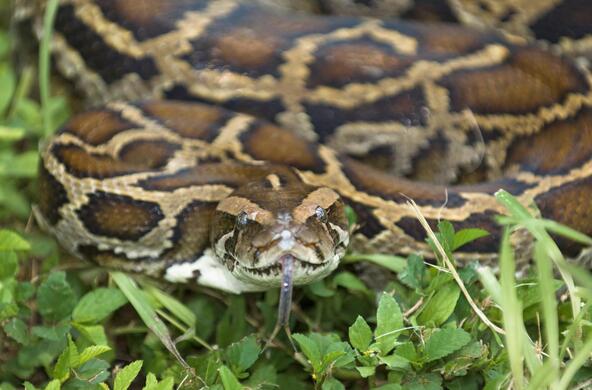My backyard is being devoured by a silent but aggressive invader, multiflora rose (Rosa multiflora). This thorny perennial shrub is an Asian import with arching green stems called canes that can reach 10-15 feet long. It advances across open ground at an alarming rate. Each spring, I am confronted with a jumble of new stems that wield half-inch thorns.
Left unattended, multiflora rose would take over my yard. The plant's growth allows it to leapfrog across open spaces. When a cane tip touches the ground, it can root there and send up another cane. This botanical juggernaut climbs over anything in its way, creating impenetrable thickets of thorns up to 10 feet high.
When trying to reclaim my yard, I dress for battle: a long sleeved sweatshirt, old pants, sturdy boots and a ball cap. Leather gloves are an absolute necessity, and my weapon of choice is a trusty pair of loppers.
I cut back multiflora rose in the early spring, before leaves appear and conceal the bases of the plant's canes. Last year, I cleared an impressive swath of plants, but over the summer new growth reclaimed all the ground I had liberated and then some. I know I will have to do better this year.
I spend a Saturday clearing plants with reckless abandon. As I maneuver my loppers into the tickets and snip the canes at their bases, thorns shred my clothing and, occasionally, my skin. A stem snatches the hat from my head and dangles it above me, taunting. It reminds me of a childhood bully; with a sneer, I lop the cane off at the knees. There is something personal - and maybe cathartic - in this fight.
In plant competition for growing space, where possession is ten-tenths of the law, multiflora rose possesses space so quickly and effectively it leaves native plants in the dust. It is able to do this by investing in length instead of mass. When I finish my day of work, I have a pile of cut canes five feet high and 20 feet long, but it weighs no more than two or three of the logs I burn in my fireplace.
Aside from the leapfrogging trick I mentioned earlier, multiflora rose has another competitive advantage over most native plants. Photosynthetic green stems let the plant grow on warm spring days before its leaves emerge, and this head start helps multiflora rose crowd out native species.
Like most bad guys, multiflora rose has a good side. In May, plants are covered with clusters of sweet-smelling little roses. These flowers turn into rose hips, which are eaten by wildlife. The plant's thorny thickets also provide protected nesting sites. But for birds that like open fields and meadows, the plant is a habitat stealer.
So I continue my battle. I know, of course, that even if I gain some ground today, I will lose the war. The war was lost more than 100 years ago when multiflora was first imported to this country from Japan.
Multiflora rose was intentionally introduced as a rootstock for cultivated roses. In the 1930s, it became more firmly entrenched when the Soil Conservation Service promoted the plant to prevent soil erosion. In Asia, the plant is probably controlled by natural enemies (diseases or herbivores). Here in the U.S., in the absence of those enemies, it has spread out of control.
To stop aggressive invaders such as multiflora rose, you have two choices: 1. Prevent them from being imported in the first place, or 2. Eradicate them before they are widely established. Once an invasive plant has been around for years, the chances of eliminating it are slim to none.
This morning, multiflora rose resumes its inexorable march forward in my backyard. My arms and neck are still healing






